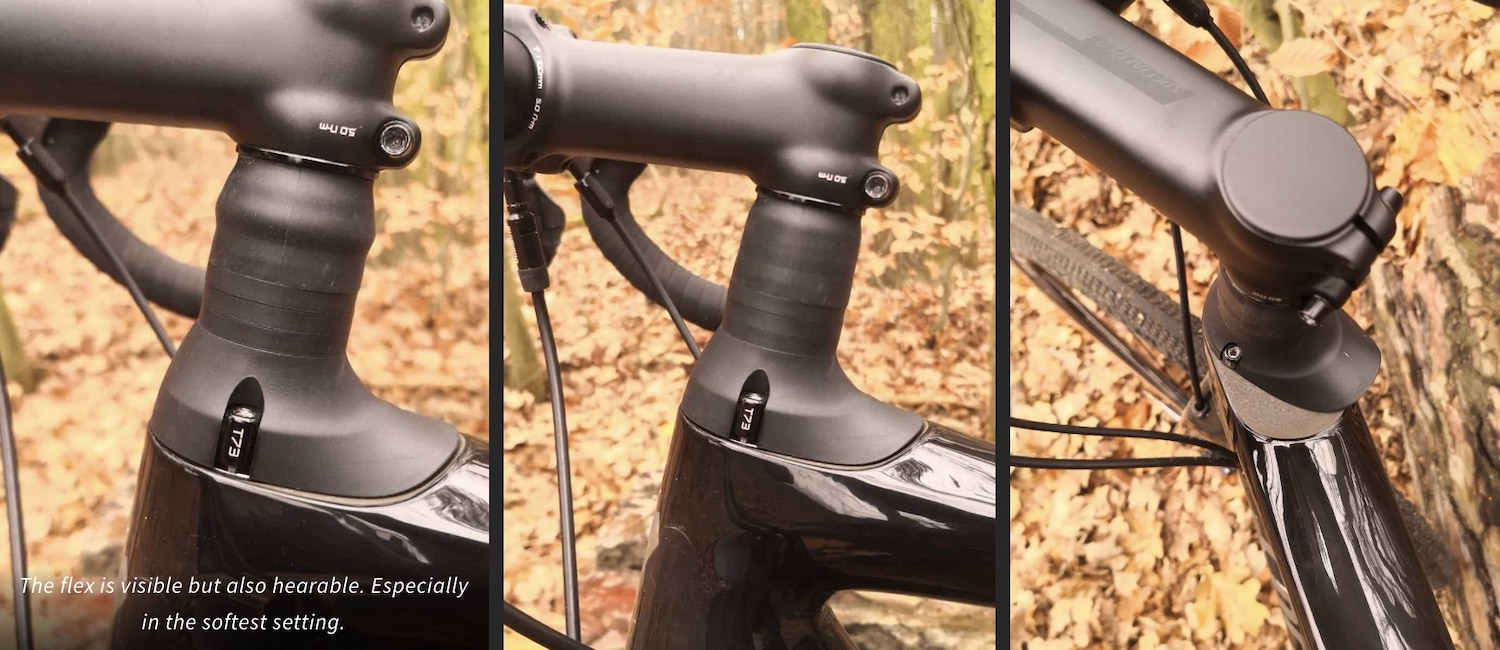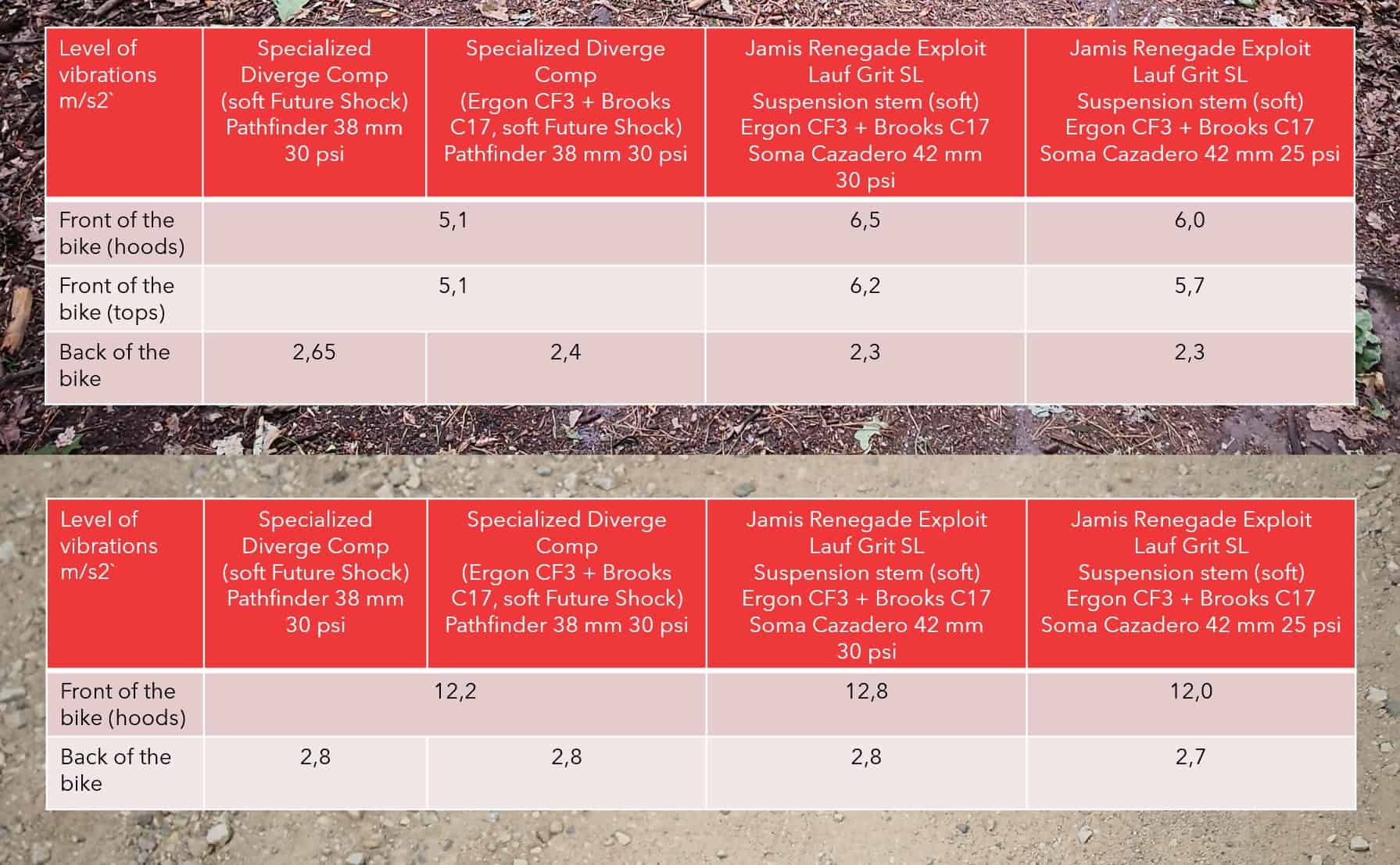Table of Contents
A great gravel bike for me is like a Swiss Army knife; it has to be good at many things. It should be fast on different types of terrain, but at the same time, it should be fun to ride.
There are gravel bikes that are fast and fun on smooth roads (like Cervelo Aspero). And there are gravel bikes that are great for proper off-road riding (like Niner MCR RDO). And there are lots of bikes in between too.
But to be a great all-around gravel bike, it has to do well in all situations. And not for just a few minutes of the ride, but it needs to be good from the start to the very end of the ride. For me, this is the crucial thing that differentiates a good gravel bike from a truly great one.
The Specialized Diverge Comp is a rare example of a bike that can be ridden fast and far, and it’ll do it comfortably too. In fact, this is quite possibly the most comfortable gravel bike you can buy right now.
Let’s take a closer look!
The Specialized Future Shock System
Let’s start with the most beneficial feature: the Future Shock front suspension system.
Prior to this test, I read and watched many reviews of this suspension system. And to be honest, none of them got me really excited. This is a shame because it’s a very clever design, that in my opinion is much better than the Redshift ShockStop Suspension stem (which is really saying something).
Why exactly do I think that Future Shock is better? It is all about the location of the suspension.
On the Redshift stem, the pivot point is between the steerer tube and the stem face plate. When you apply force to the handlebar, the stem flexes downwards. The longer the stem and the more weight you put on the handlebar – the more it will move.
In comparison, the Future Shock is placed entirely inside the steerer tube, and it compresses on the same axis as your fork. This location makes all the difference because it doesn’t rely on leverage to activate. The result is you get the same level of comfort no matter where you place your hands on the bars.
The Future Shock also has noticeably less handlebar movement while you’re riding in the hoods. This is one of the only downsides of the Redshift stem – you can constantly feel the handlebar moving at the hoods. The only way to reduce this movement is to use harder elastomers that greatly reduce the ability of the stem to damp vibrations.
On my test bike, I had the FutureShock in its softest setup, and boy, it worked. I was deliberately looking for different test scenarios just to find the bike’s limits. I was constantly amazed at how much damping I could get from just 20mm of movement.
One of my ultimate tests of bike comfort is riding on a flood bank near the Vistula River. This is a very narrow path with a lot of imperfections both big and small. Normally, I cycle there at 20km/h but on the Specialized Diverge Comp, I was comfortably traveling at 25km/h!
The Pure Speed of the Specialized Diverge Comp
The Specialized Diverge Comp is a carbon bike with a very massive bottom bracket area. Combine that with the short chainstay length (421 mm) and you get a seriously fast-feeling bike.
Seriously, I was amazed at how much quicker I could accelerate on this bike compared to my heavier and noticeably more flexy Jamis Renegade. The Diverge encourages you to go so fast that, for the first time, I started to wonder if the 48/32 tooth crankset is big enough to get the most out of this bike!
Part of the reason why this bike is so fast is Specialized’s decision to use the 38mm Specialized Pathfinder tires.
It seems that the bike industry is now heading into ‘the-bigger, the-better’ trend in terms of tires.
But my previous tests and experiments with different tire sizes and pressure indicate that we don’t really need big tires to feel comfortable. It is all about finding the best combo between tire casing, width, and pressure for the terrain you ride.
When riding on Specialized Diverge Comp with the 38mm tires at 30 psi I was constantly thinking that I may have found the perfect sweet spot between tire size, tire pressure, and tire tread. This tire has a rather supple casing, so it rolls well, but it also offers a surprising amount of grip when going off-road.
What’s more, when I installed some supple Soma Cazadero 42mm tires with the same 30 psi air pressure – the overall comfort actually decreased (this was confirmed in my vibration testing). Part of the reason for this is that there is a higher casing tension with the wider tire, so it cannot flex as much.
But the Pathfinders are likely, at a minimum, just as supple as the Cazaderos.
Negatives to the Specialized Diverge Comp
The first thing is the bike’s ride position.
Due to the FutureShock location, this is a very tall bike (613mm of a stack on a size 56cm). Combine this with a 44cm wide drop bar (with a 15mm rise), and a very short chainstay and you get the sensation you are sitting up very high.
But to my surprise, this does not stop you from riding hard and fast on this bike. And to be honest, after a few minutes, you simply adapt and forget about the taller bar height. In fact, the high stack makes this bike great for longer trips.
The second thing is the FutureShock. Or to be more exact, the lack of the FutureShock 2.0 variant.
The Future Shock 2.0 features a more refined suspension damper (hydraulic) that works smoother. It also has an external dial, where you can fully lock it when you need to transfer the most power to the ground. This would be a big step up from the Redshift ShockStop stem, which you cannot lock out.
The third thing is the very low bottom bracket – the BB drop on this bike is a massive 85mm. This results in frequent pedal strikes even on not-so-bumpy roads.
I know that this low BB height gives the bike a super planted feeling, but I would prefer to have a bike with a higher BB. I cannot recommend putting 650B x 47mm tires on this bike because your pedals would get destroyed by constantly hitting the rocks.
Fortunately, you don’t need wider tires to feel comfortable on this bike, and that’s the beauty of it.
And finally, there is a S-Works CG-R seatpost and Specialized Power Comp saddle.
The seatpost itself, due to its unique shape and internal elastomer, should provide up to 18mm of extra cushioning. But the vibration test between the CG-R and my Ergon Allroad Pro showed that the CG-R is only comparable on fast gravel roads. On the forest trail with bigger bumps, the CG-R was certainly less comfortable.
The Specialized Power Comp saddle does not help either in that regard.
In my saddle shootout, it was offering much less compliance than the Brooks C17 or SQlab 612 saddles. Although the overall rear-end comfort was enough to keep me seated in almost any situation, there is certainly room for improvement.
When I fitted my Ergon Allroad Pro and Brooks C17 saddle to this bike I managed to significantly lower the overall vibrations level at the rear on a forest bumpy trail.
Vibration Test Results
You can see my vibration measurement procedure & outdoor test courses HERE.
In almost every test scenario, the Specialized Diverge had fewer vibrations than my very much comfort-upgraded Jamis Renegade.
On the bumpy forest trail, the Specialized even had 21,5% fewer vibrations working their way to my hands. This is absolutely incredible given we already know the Redshift ShockStop is leaps and bounds better than a rigid stem.
And what’s even more impressive is that my benchmark bike has a Lauf Grit SL suspension fork too, as well as wider, very supple Soma Cazadero tires.
Would I Buy The Diverge?
When I was riding Specialized Diverge Comp I was constantly asking myself this question: why do I still own a heavy steel gravel bike?
My Jamis Renegade is like a touring bike next to the carbon Diverge – it feels slower, and dare I say it, less fun to ride.
I had to use a Lauf Grit SL suspension fork and a Redshift ShockStop suspension stem, as well as some supple Soma Cazadero 42mm tires at 25 psi… just to achieve the low vibration levels of the completely stock Specialized Diverge Comp. And all of this was at the cost of more handlebar movement (from the Redshift stem).
So the question remains: why do I use a heavy steel bike with all of my comfort-improving parts when I can just buy a stock Specialized Diverge Comp?
The only answer I can think of is that my two-and-a-half-year-old son loves to ride with me, and I simply can’t install his Romer Jockey child bike seat on the carbon seat tube of the Diverge. So, it looks like for now, I am stuck with steel.













